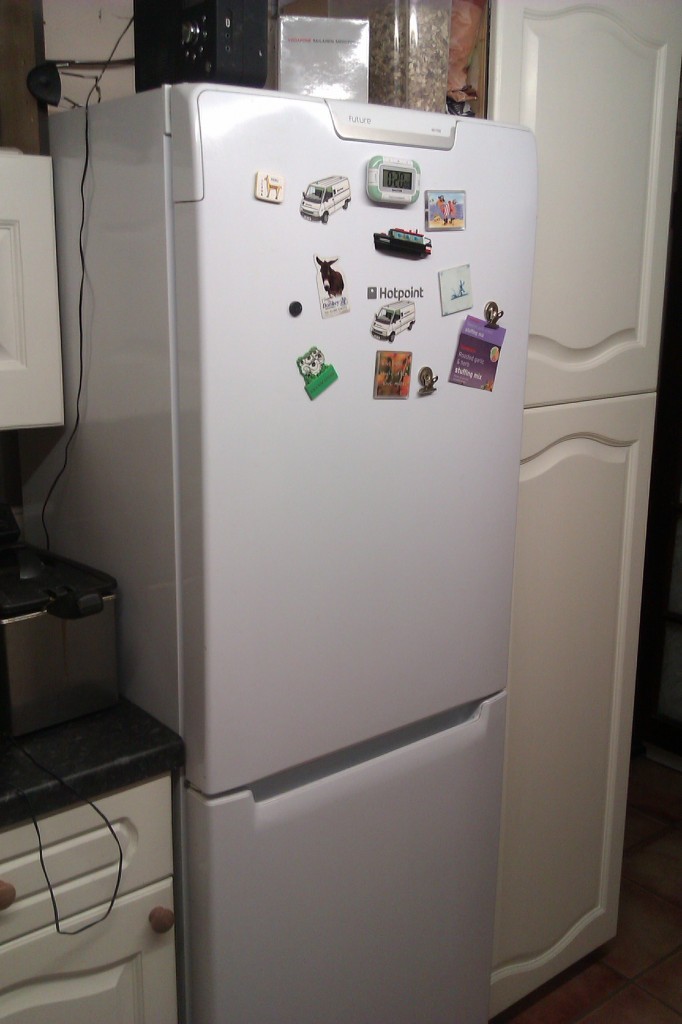Or why to but a top efficiency freezer.

So the power company decided to schedule a 9 hour outage for today and not bother telling us. At 09:15 the power went off and we were suddenly in the dark. No power, no network and even the cordless house phone was off. Sure we have mobiles but we live in a dip and have minimal signal.
We’re screwed, right?
Not at all, because when I became a remote worker I spent some time working out exactly what I’d do if this happened. Dress this up in fancy clothes and a consultant will call it “disaster recovery planning” and relieve you of the contents of your wallet. The reality is that it’s just a bit of common sense, but it is important that any small business actually does it.
There’s an old phone I keep in the spare bedroom that doesn’t need external power so within a couple of minutes we have some form of communication. All the utility company phone numbers are on a board by the fridge so within 10 minutes I want someone’s head on a plate. At least I know the score though and it means we’re out of the office for the day. We both use (docked) laptops as our primary machines so we grab them, an external HDD and a bunch of other goodies and decamp to a nearby relative’s. All sorted.
If you are a small business, a remote / home worker or a contractor you need to think about what you’d do if something goes wrong. There are four things to look at.
- What can go wrong?
- How likely is it?
- How severe it it?
- What are you going to do about it?
There are 2 parts to the last one. One part is obvious, what you do when it happens but you should also consider how you can mitigate it – how you can make it less likely or its effect less serious if it does happen.
Oh, and a small piece of advice, always get the most efficient freezer you can. 9 hours of no power and not a hint of defrosting!